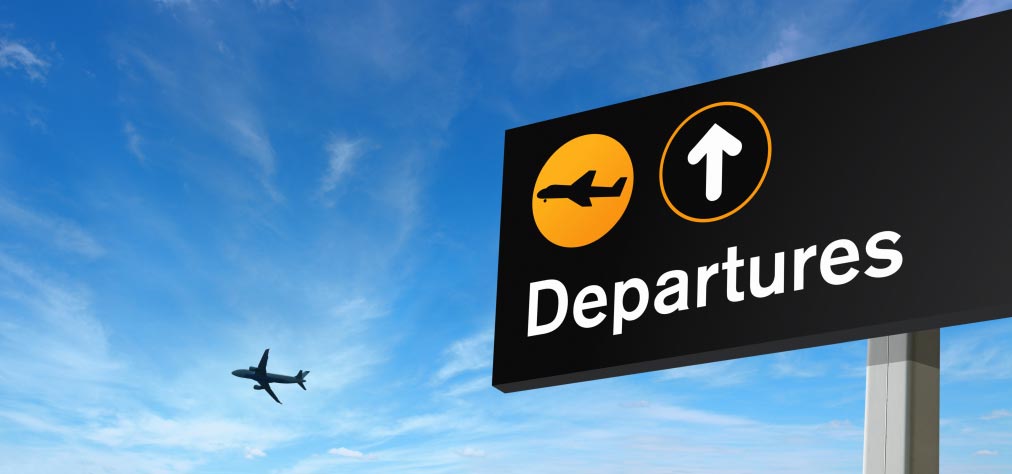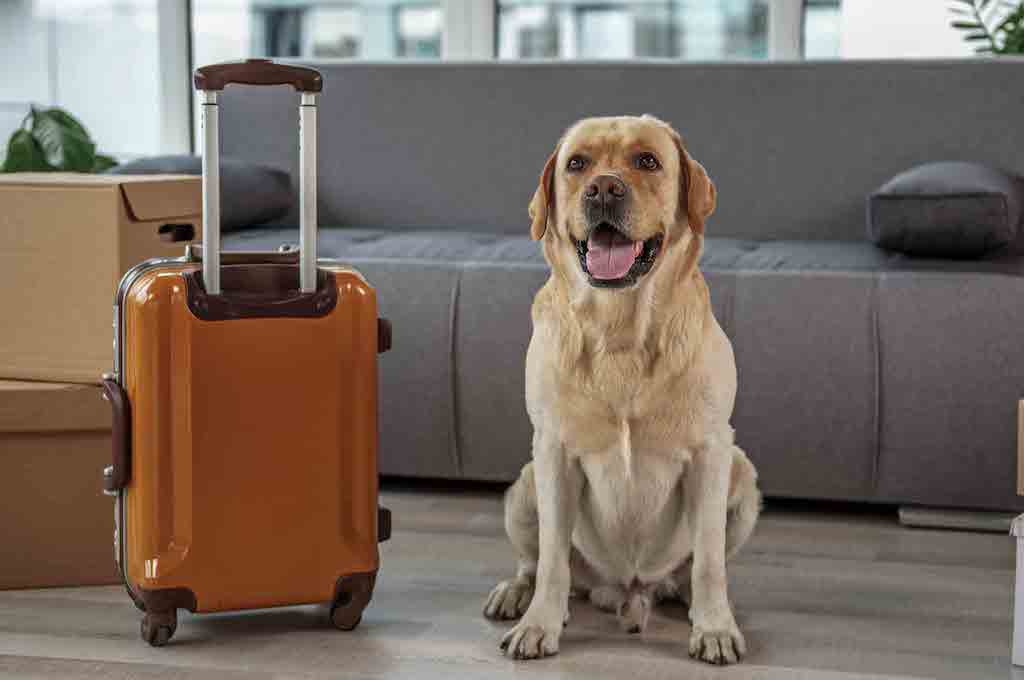Air travel, with its promise of new adventures and experiences, often begins with the somewhat less glamorous process of navigating airport security. While it’s an essential step to ensure the safety of all passengers, it can be a source of stress and confusion for many. However, with the right knowledge and a touch of preparation, this seemingly daunting task can become a breeze. In this guide, we will discuss on top 12 tips for a smooth airport security check experience, ensuring you start your journey on the right foot.
Table of Contents
Arriving Prepared:
The initial step to a hassle-free airport experience begins even before you leave your home. Preparation is the cornerstone of smooth travel. When we say “arriving prepared”, it’s not just about being physically present at the airport. It encompasses a series of actions:
- Documentation: Always double-check that you have all the necessary travel documents. This includes not just your passport and boarding pass, but also any visas, health documentation, or special permits you might need for your destination. A good practice is to have both physical and digital copies stored securely.
- Organisation: Invest in a travel wallet or organizer. This simple tool can be a lifesaver, allowing you to have all your documents in one place, reducing the chances of misplacing crucial papers.
- Mental Preparation: Familiarise yourself with the layout of the airport, especially if it’s your first time there. Knowing where your check-in counter and departure gate are can save you a lot of stress.
Time Management:
Time is of the essence when travelling. Airports are unpredictable places, and what might seem like a straightforward process can quickly become time-consuming due to unforeseen delays.
- Early Arrival: Aim to arrive at least 2-3 hours before a domestic flight and 3-4 hours for international ones. This buffer allows you to account for potential traffic delays, long check-in lines, or unexpected security checks.
- Stay Updated: Use airline apps or websites to check for any last-minute changes or delays to your flight. This can help you adjust your arrival time if necessary.
- Mindset: Remember, it’s always better to wait at your gate with a coffee in hand than to rush through the airport in panic.
TSA PreCheck and Global Entry:

In the world of frequent flying, time is a luxury. That’s where programs like TSA PreCheck and Global Entry come into play.
- Benefits: By enrolling in these programs, you’re essentially becoming a ‘known traveller’. This means shorter lines, not having to remove shoes or light jackets, and generally a much faster and smoother security screening process.
- Application Process: While there’s an application process and a fee involved, the convenience offered, especially for regular travellers, is unparalleled. The process involves background checks and an interview, ensuring that members are low-risk travellers.
- Coverage: While TSA PreCheck is more focused on expedited security checks within the U.S., Global Entry also includes the benefit of quicker customs screenings when entering the U.S. from abroad.
Packing Strategically:
Packing isn’t just about fitting everything into your suitcase. It’s about organizing your belongings in a way that makes your journey smoother.
- Essentials First: Items like your travel documents, essential toiletries, and any electronics should be easily accessible. Think about the security process; having these items at the top of your bag can save you time when unpacking and repacking at security checkpoints.
- Know the Rules: The TSA has clear guidelines on what you can and cannot bring in your carry-on, especially when it comes to liquids and gels. Each passenger is typically allowed to bring one quart-sized bag of liquids, aerosols, gels, creams, and pastes, each in containers of 3.4 ounces (100 millilitres) or less.
- Prohibited Items: Familiarise yourself with the list of prohibited items. Some might surprise you! It’s always better to check in advance than to have to discard items at the airport.
- Packing Aids: Consider using packing cubes or compression bags. Not only do they help organise and maximise space, but they also make the repacking process at security checks much quicker.
Dressing Smartly:
Dressing for travel, especially air travel, is a balance between comfort and convenience. Your attire can significantly impact your experience at security checkpoints.
- Comfort Over Style: While it’s tempting to dress up for a journey, prioritise comfort. Loose-fitting clothing and layers are ideal, especially for longer flights where you might experience temperature fluctuations.
- Footwear: Opt for shoes that are easy to slip on and off. At many security checkpoints, you’ll be required to remove your shoes. Sandals, slip-ons, or loafers can be a good choice. Remember to wear socks to avoid walking barefoot.
- Minimising Metal: Metal objects can set off the metal detectors, leading to additional screening. While items like watches and jewellery are obvious, even belts with large buckles or clothing with excessive studs can be problematic. Consider using a plastic or cloth belt, or even better, go beltless if possible.
Handling Electronics:
In today’s digital age, travelling without electronics seems almost unthinkable. However, these devices have specific protocols at security checkpoints.
- Accessibility: Laptops, tablets, and other large electronic devices typically need to be removed from bags and placed in separate bins for screening. Ensure they’re packed in a way that allows for easy removal and repacking.
- Charging: It’s a good practice to ensure your devices are charged. In some cases, security personnel might ask you to switch on your device for verification.
- Protective Cases: While protective cases are great for safeguarding your electronics, some might need to be removed during screening. Be prepared for this additional step.
Travelling with Special Items:
Special items can range from baby gear and medications to gifts and gourmet foods. Each comes with its own set of challenges at the airport.
- Medications: Always carry medications in their original packaging, complete with labels. If you’re carrying prescription drugs, having a copy of the prescription can be beneficial. Liquid medications are usually exempt from the liquid restrictions but declare them at the checkpoint.
- Baby Gear: Items like strollers, car seats, and breastmilk have specific guidelines. For instance, breastmilk is allowed in quantities greater than the standard liquid limit but must be declared for inspection.
- Gifts: If you’re travelling with gifts, especially during the festive season, avoid wrapping them. There’s a chance security might need to inspect the contents, requiring you to unwrap the item.
Interacting with TSA Officers:
Your interaction with TSA officers can set the tone for your entire security experience. These officers are there to ensure the safety of all passengers, and a little cooperation can go a long way.
- Respect and Courtesy: Always approach officers with respect and courtesy. They’re performing their duties, and a positive attitude can make the process smoother for everyone involved.
- Following Instructions: Listen carefully to any instructions given and follow them promptly. This not only speeds up the process but also ensures you don’t have to undergo additional screening.
- Queries and Concerns: If you have any doubts or concerns, ask politely. TSA officers are trained to provide guidance and will clarify any procedures or requirements.
Choosing the Right Security Lane:
Airports, especially larger ones, often have multiple security lanes, each catering to different groups of travellers.
- Signage and Information: Always look out for signs or digital boards that indicate the purpose of each lane. Some lanes might be designated for business class travellers, families, or those enrolled in expedited security programs like TSA PreCheck.
- Families and Special Needs: Some lanes are specifically designed to accommodate families with young children or individuals with special needs. These lanes might have additional assistance and can be less rushed, making the process smoother for those who need a bit more time.
- Expedited Lanes: If you’re enrolled in programs like TSA PreCheck or Global Entry, you’ll have access to expedited lanes. These lanes are typically faster and require fewer security checks, ensuring a quicker passage through security.
Being Mindful of Prohibited Items:
Every airport has a list of items that are strictly prohibited, either in carry-on luggage, checked luggage, or both.
- Firearms and Weapons: While it might seem obvious, it’s worth reiterating that firearms, ammunition, and many other weapons should only be in checked luggage. They must be declared at the check-in counter, securely packed, and unloaded.
- Commonly Overlooked Items: Some prohibited items, like certain tools, large liquid containers, or specific personal care items, can be easily overlooked when packing. Always check the TSA’s official list of prohibited items before packing.
- Local Regulations: Remember, while TSA guidelines apply to U.S. airports if you’re travelling internationally, the destination country might have its own set of regulations. Always familiarise yourself with these to avoid inconveniences.
Traveling with Pets:

Taking your pet on a journey can be both exciting and challenging. Being prepared is key to ensuring a smooth experience for both you and your furry friend.
- Pet Carriers: Ensure your pet is in a secure and comfortable carrier that meets airline specifications. This carrier will need to go through the X-ray machine, so be prepared to hold or leash your pet during this process.
- TSA Procedures: While the carrier goes through the X-ray, TSA officers might need to inspect it. Always follow their instructions, and remember they’re trained to handle such procedures without causing distress to your pet.
- Documentation: Depending on your destination, you might need specific documentation or health certificates for your pet. Always check in advance and have these documents readily accessible.
Seasonal Travel Tips:
The joys of the festive season, the spookiness of Halloween, or the warmth of Thanksgiving – each season brings its unique flavour to travel.
- Packing Food: If you’re travelling during Thanksgiving or other food-centric holidays, ensure that any food items, especially liquids or gels like cranberry sauce or gravy, adhere to TSA’s liquid guidelines.
- Gifts: The joy of gifting during the holiday season can be slightly dampened if you have to unwrap a beautifully packed gift at security. It’s always a good idea to either pack unwrapped gifts or consider gift bags.
- Costumes and Props: Flying off to a Halloween adventure? Remember, while costumes are allowed, some props, especially those that resemble weapons, might be prohibited.
- Stay Updated: TSA often releases specific guidelines or tips for major travel seasons. Keeping an eye on their official website or social media channels can provide valuable insights.
Conclusion:
Navigating airport security doesn’t have to be a chore. With the insights and tips provided in this guide, you’re now equipped to handle any curveball the security checkpoint might throw your way. Remember, preparation is key, and a little forethought can save you a lot of time and hassle. So, the next time you’re gearing up for a journey, keep these pointers in mind and embark on your travels with confidence and ease. Safe journeys and blue skies ahead!
FAQ
1. What are the basic airport security check rules?
Airport security rules require passengers to undergo a screening process, which includes a metal detector scan, a carry-on baggage X-ray, and sometimes a pat-down or additional screening.
How can I make my airport security experience easier?
Being prepared is key. Ensure you’re familiar with TSA guidelines, pack liquids according to the 3-1-1 rule, wear easily removable shoes, and have your travel documents ready.
What is the 3-1-1 rule at airport security?
The 3-1-1 rule refers to the TSA guideline for carry-on liquids. Each passenger is allowed to bring a quart-sized bag of liquids, aerosols, gels, creams, and pastes, each in containers of 3.4 ounces (100 millilitres) or less.
What are the steps of airport security?
The typical steps include: presenting your boarding pass and ID, placing carry-ons and personal items in bins for X-ray screening, walking through a metal detector or full-body scanner, and sometimes undergoing additional screening if necessary.
How do you avoid long lines at airport security?
Consider enrolling in expedited security programs like TSA PreCheck or Global Entry. Arriving during off-peak hours and checking queue times via airport apps can also help.
Are there specific lanes for families or VIPs at airport security?
Yes, some airports have designated lanes for families, VIPs, or those enrolled in expedited security programs. Always check the signage to ensure you’re in the right lane.
Can I bring food through airport security?
Yes, food items are generally allowed, but they might need to be removed from your bag for separate screening. Be aware of liquid or gel food items, as they must adhere to the 3-1-1 rule.
How should I pack electronics for airport security?
Electronics, especially larger ones like laptops, should be easily accessible in your carry-on. They typically need to be removed and placed in separate bins for screening.
What should I do if I have a medical condition or disability?
Inform the TSA officer about your condition or any medical devices, implants, or equipment you have. You can also request a private screening if needed.
Are there any items that are strictly prohibited in both checked and carry-on luggage?
Yes, certain items, such as flammable liquids, explosive materials, and certain sharp objects, are prohibited in both checked and carry-on luggage. Always check the TSA’s official list before packing.





